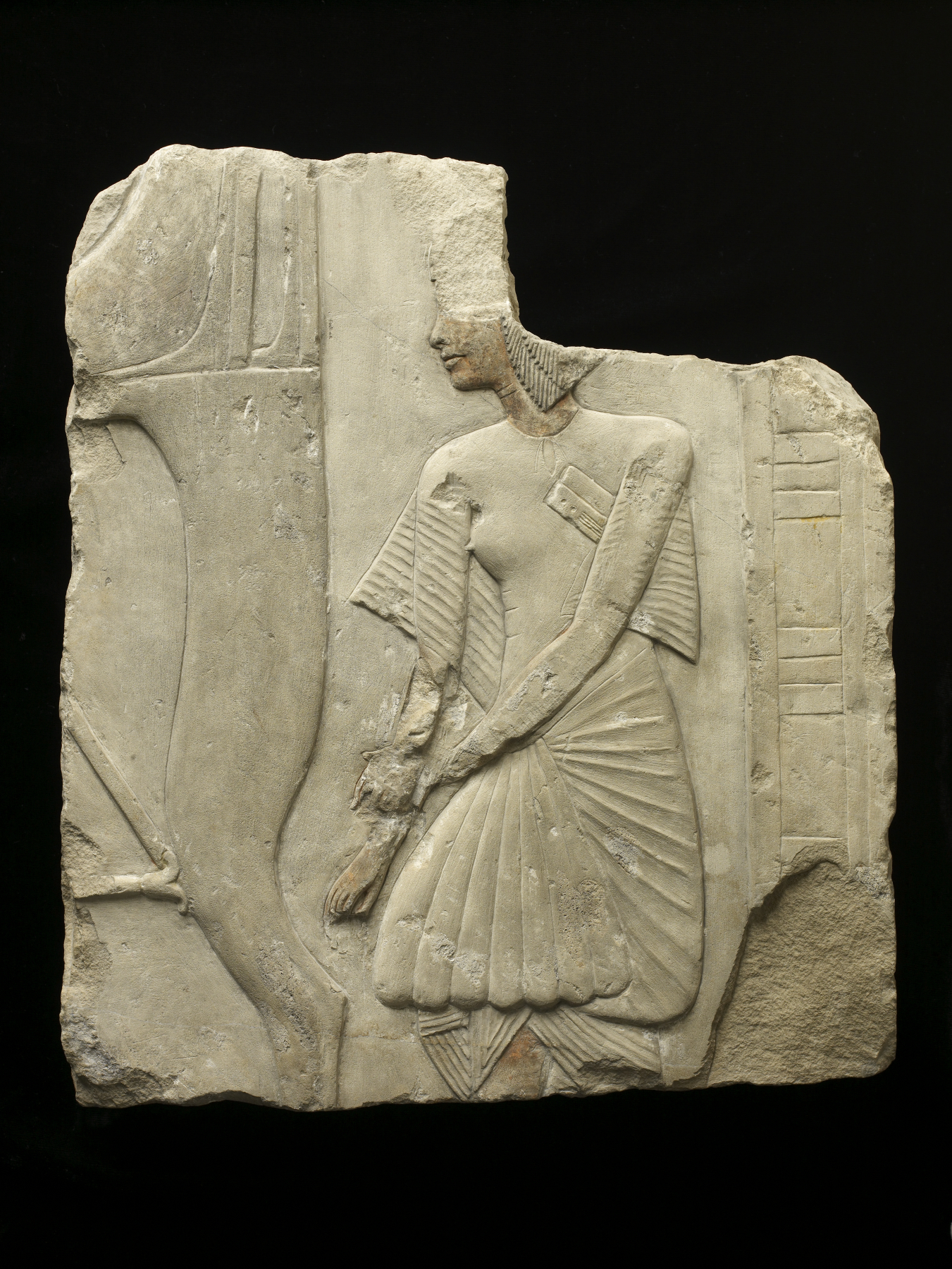Fragment of a Tomb Relief
(Ancient Egypt and Nubia )
Deriving from one of the most beautifully sculpted New Kingdom tombs, this small relief exemplifies the best artwork of the era of Tutankhamun (1336-1327 BCE). A scribe of the general and (later king) Horemheb is shown standing behind a chair, which is represented on a scale far larger than he. Though the scribe's social status is obviously below that of the tomb's owner, his curling, echeloned wig and his upturned nose are characteristic features favored in the period immediately following Akhenaten's death in 1336, as is the somewhat slight body, which is punctuated by a spreading belly and hips. The delicately carved and clearly defined pleating of the scribe's garments reveals that the body type is a deliberate fashion and not artistic ineptitude.
The bureaucrat grasps his far wrist with his near hand in a gesture of deference to the unseen tomb owner seated before him. Tucked under his near armpit is the man's scribal palette, which identifies his profession, despite the absence of any inscription. The vertical bar behind the official indicates the end of this composition.
Provenance
Provenance (from the French provenir, 'to come from/forth') is the chronology of the ownership, custody, or location of a historical object. Learn more about provenance at the Walters.
Dikran Kelekian, New York or Paris; Henry Walters, Baltimore, 1925, by purchase; Walters Art Museum, 1931, by bequest.
Conservation
| Date | Description | Narrative |
|---|---|---|
| 11/17/1981 | Examination | examined for condition |
Geographies
Egypt, Saqqara (Place of Origin)
Measurements
16 1/2 x 14 7/16 in. (41.9 x 36.7 cm)
Credit Line
Acquired by Henry Walters, 1925
Location in Museum
Not on view
Accession Number
In libraries, galleries, museums, and archives, an accession number is a unique identifier assigned to each object in the collection.
In libraries, galleries, museums, and archives, an accession number is a unique identifier assigned to each object in the collection.
22.128


